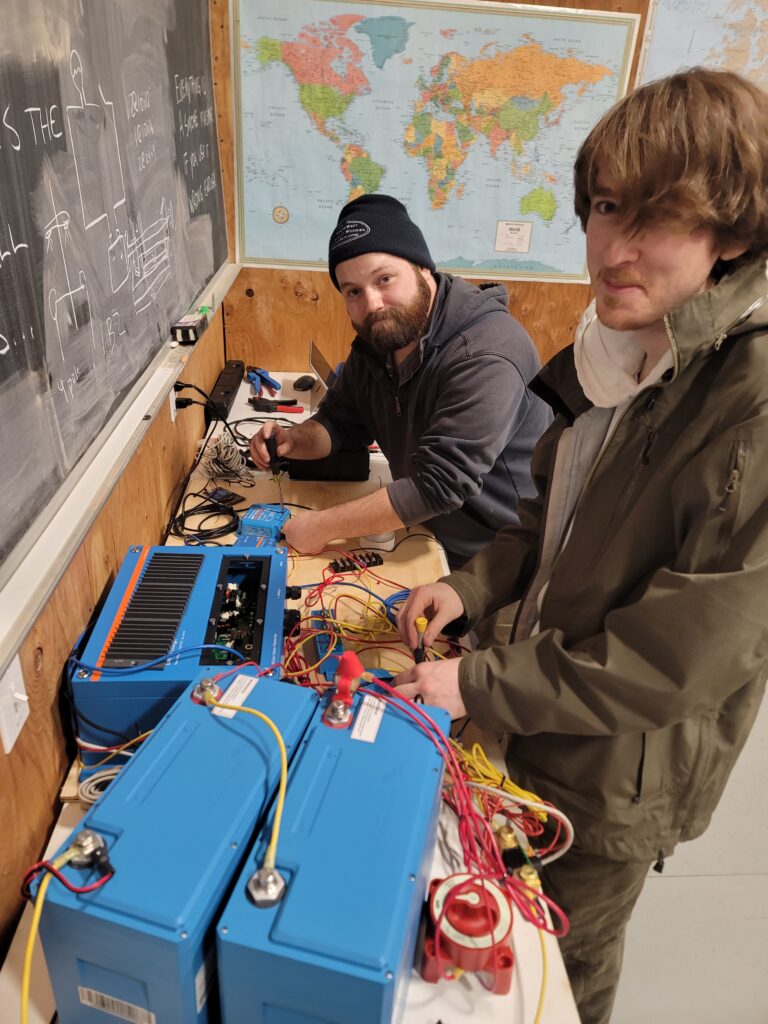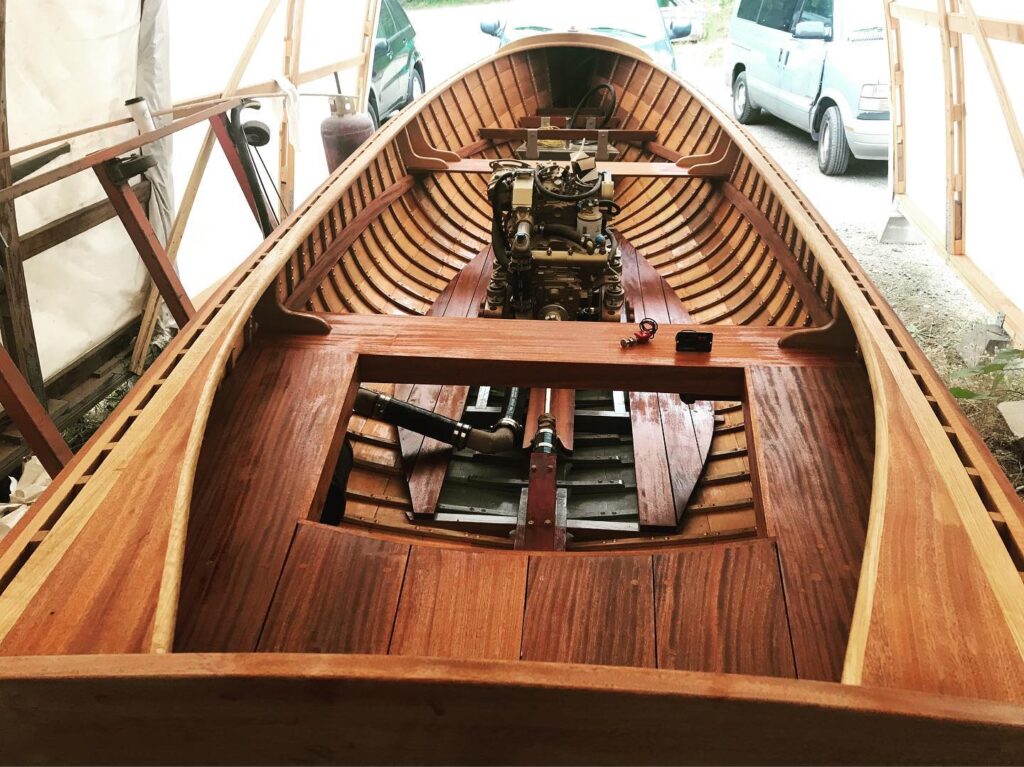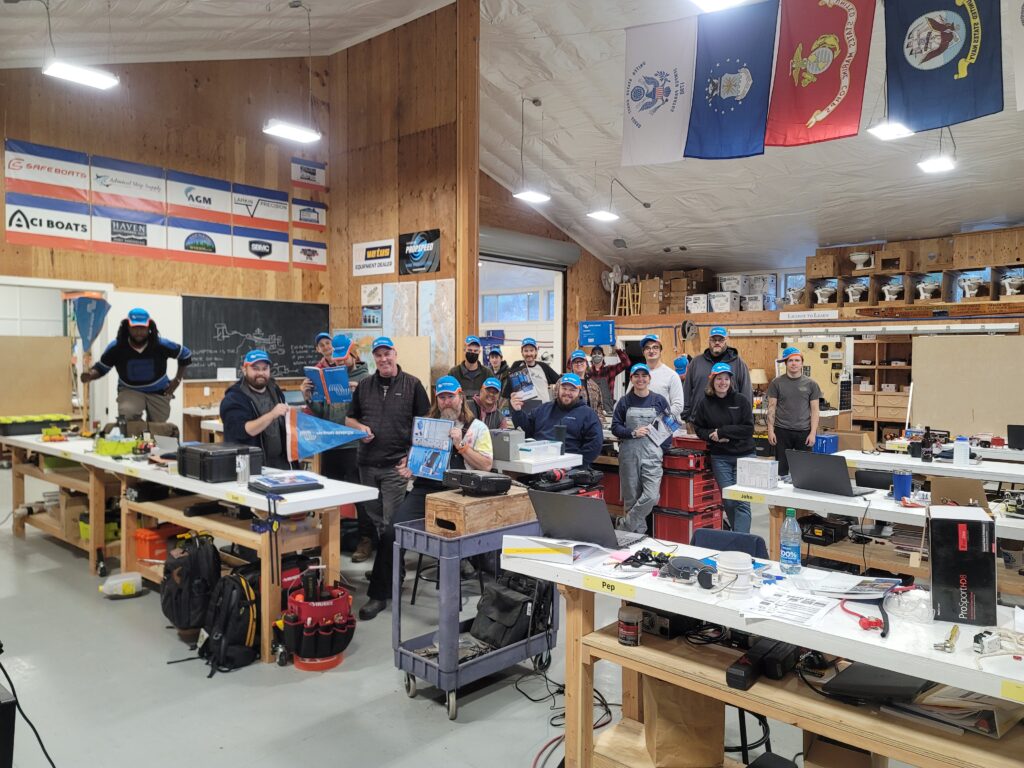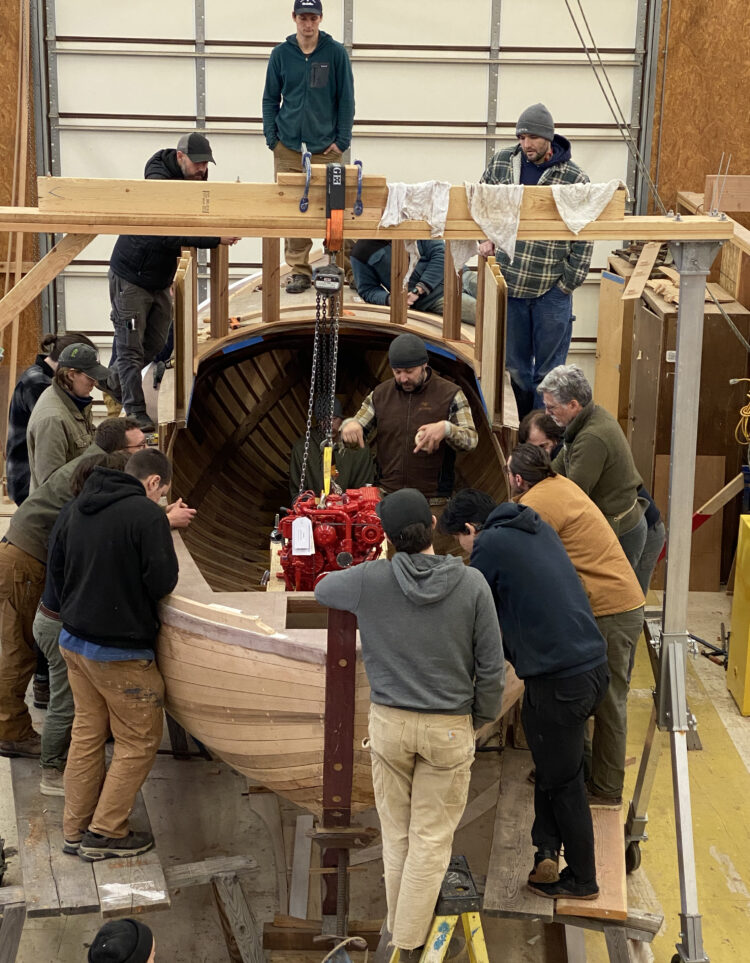
The Northwest School of Wooden Boatbuilding (NWSWB) in Port Hadlock, Washington State, USA, is a busy school with sixty pupils on campus, some of whom are there to learn wooden boat construction techniques, and others to gain a solid grounding in the electrical and mechanical systems which drive modern leisure and working vessels.
Some students go on to take both courses.
Graduation from the much-respected boatbuilding school offers easy access to entry-level employment in marina boatyards; commercial boatbuilders; and even more widely in related marine trades.
The mission of the NWSWB is to teach and preserve boatbuilding and marine systems skills while developing the individual as a craftsperson.
The sheer beauty of traditional timber boats with their sweeping lines ensures that there will always a market for restoration and new-builds. 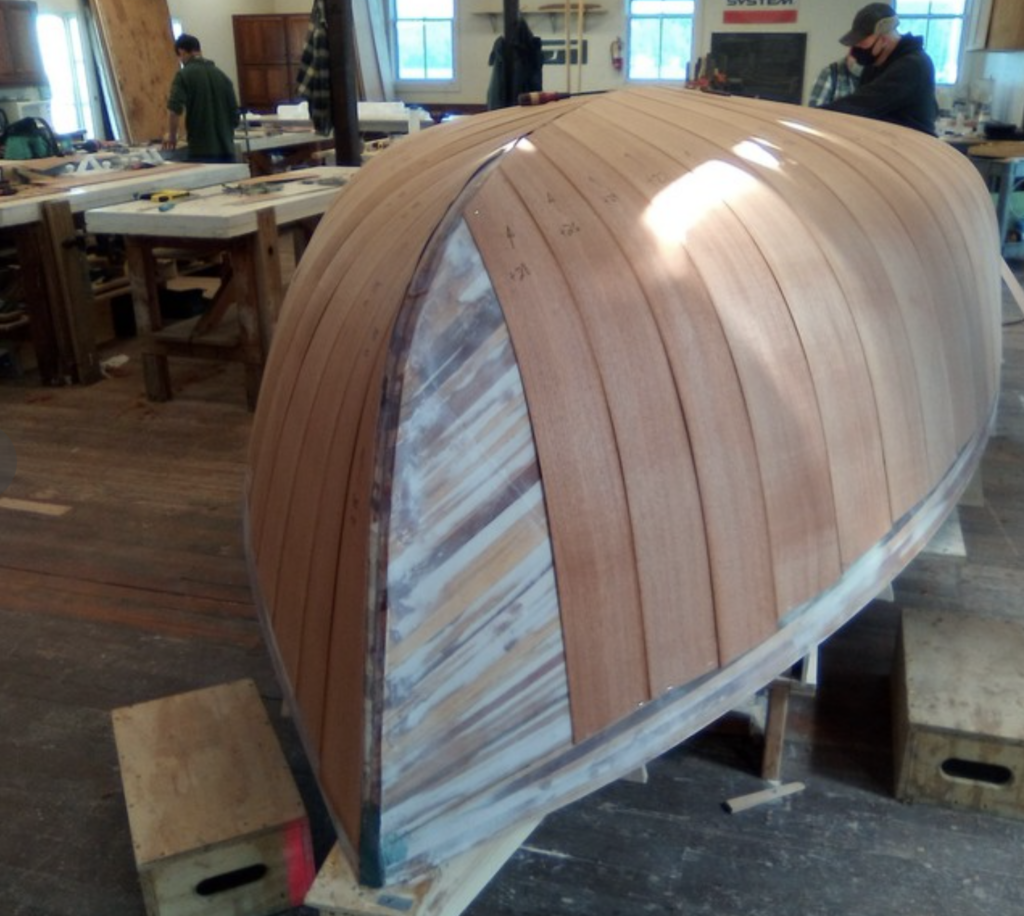
Likewise, students who graduate from the school’s Marine Systems program discover that a shortage of candidates with their skills, and plenty of unfilled vacancies in the industry, brings them many interesting employment opportunities.
It’s also true that the woodworking skills students learn are easily transferable to advanced carpentry in any field – and Systems students will find that their new knowledge is equally applicable in other industry sectors, such as Recreational Vehicles, and off-grid homes.
Kevin Ritz conceived and developed the NWSWB’s Marine Systems program. The course syllabus along with the department’s hands-on training equipment – including everything from diesel engines to that essential piece of equipment: the marine toilet – have been curated according to his knowledge of what the Marine industry installs in modern water craft.
Kevin is a former lead instructor for the American Boat and Yacht Council (AYBC). Now the lead instructor for the Marine Systems program at the school, one of the Marine Systems Diploma Program’s attractions is that it includes twenty-four complete marine electrical power systems – one per student – which becomes the students ‘property’ for the duration their program.
Each installation comprises right up-to-date devices used for the power supply of superior marine craft having well-appointed accommodation and utilities.
- Lithium-Iron-Phosphate Batteries Smart are particularly suited to mobile energy applications because of their light weight and compact ‘energy-dense’ unit size, compared to Lead Acid batteries. Low internal resistance allows them to charge quickly with a cycle efficiency of 92% – both important factors in off-grid energy use.
- VE.Bus BMS V2 are Battery Management System devices specifically designed to manage Victron Energy Lithium batteries in systems with Inverters / Chargers having a VE.Bus Interface. In case of over- or under-voltage at cell level they intelligently switch and protect the installation.
- MultiPlus 12/3000/120-50 120V is a pure sine wave Inverter/Charger often chosen as part of a mobile energy installation. Two AC outlets – one of which is live only when there is AC input – allows the user to connect non-essential loads to the disconnect outlet. On leaving their dock or marina berth, only essential loads will remain powered up. Back in dock, plugged in, power supply to both outlets is automatically resumed. And if the shore power is current-limited (as it so often is) the MultiPlus’ PowerAssist feature will add battery power to shore power to run big current draw devices.
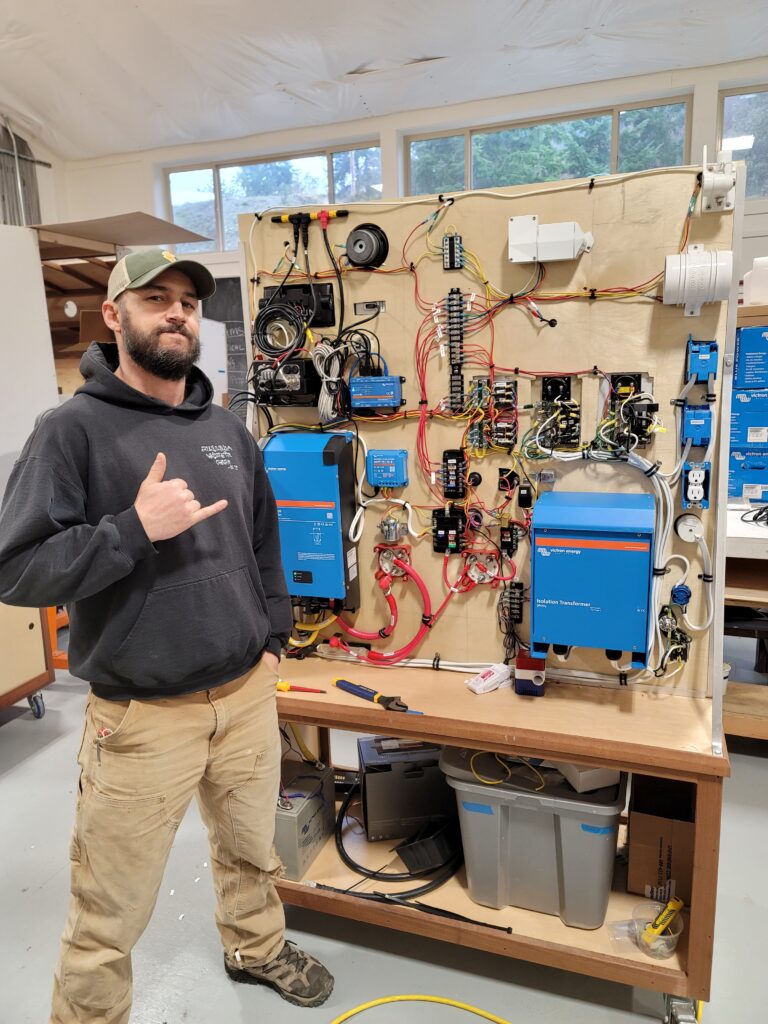
- Isolation Transformer 3600W 115/230V Connecting a shore based ground wire to the metal ground of a boat is likely to cause galvanic corrosion. Not connecting to the shore based ground wire is dangerous. The Isolation Transformer safely prevents shore-power galvanic corrosion by eliminating the electrical continuity between ship and shore.
- Autotransformer 120/240V-32A provides step up step down output, and split-phase balancing to make maximum use of the available current for both 120 and 240V output legs. A data sheet describing a working example of the problems which can be encountered in a split-phase power supply can be found here.
- Cerbo GX is a communication device which extends system control by allowing installed devices to talk to each other. Cerbo GX data can also be communicated to VRM – the Victron Remote Management platform which allows users to monitor and control their installation from anywhere in the world. Local touch-screen control can be provided by a GX Touch 50. Local system management can also be executed using any smartphone or similar device which has the VictronConnect app. All platforms can show Tank Level data, and all data can be viewed both in real time, and historically.
Kevin Ritz says: “Students are going to be able to do hands-on installation practice, programming, and trouble-shooting using state-of-the-art equipment. They’ll be able to hit the ground running when they get into the workplace.”
Kevin’s program is supported with input from Victron sales managers, trainers and brand Ambassadors like Charlie Johnson PE, who is an ABYC Master Technician.
The electrical training consists of a number of modules beginning with the nature of electricity; the danger of electric shock drowning; overcurrent protection; using a multimeter; series-, parallel-, open- and short-circuits; wiring, crimping, types of termination; schematics and diagrams; load calculations and wire sizing; batteries; alternators, transformers, inverters, generators and galvanic isolation; through to voice communication and the NMEA marine data communication protocols.
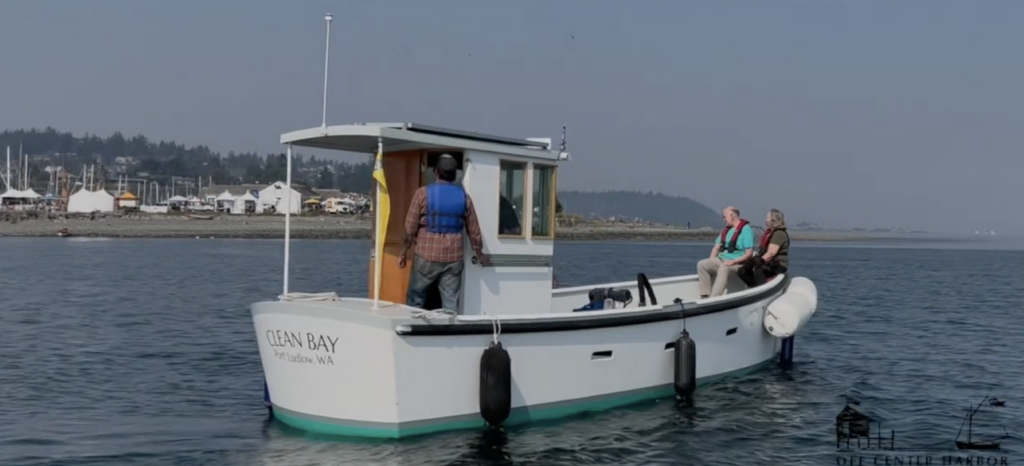
Kevin Ritz, together with Bruce Blatchley and his students designed and built a fully equipped ‘pump out’ boat which is driven by an electric motor and serves boat owners in the Puget sound. Click the image for full video by Off Center Harbor [Opens in a new window].
Energy Installation Training Manuals
In addition each student is given a hard copy of the book Wiring Unlimited (digital downloads are free for anyone using the link). It contains a wealth of information about the nature of electricity; and guides the user toward making informed decisions when choosing wiring, fuses, terminations and switches to carry the system’s expected currents, and to serve the installation topography.
Students also receive a copy of the book Energy Unlimited (also free to download using the link). Energy Unlimited has been written with the Marine application in mind and exhaustively discusses battery based energy systems: including battery health; battery types; together with charging from AC and DC sources; dual battery charging; and it suggests system design to meet low, medium and high daily energy demands and how to provide sufficient power for inrush – or intermittent Peak demands.
Betsy Davis, Executive Director at NWSWB says: “The Marine Systems program is a competency-based education program designed to teach skills needed by and to meet the demand for entry-level marine technicians. The program provides both theoretical and hands-on learning to provide students with necessary skills to enter the expanding market for marine systems technicians. The program covers tasks integral to marine systems installation, service, and repair in topics such as electrical and solar systems; electronics; corrosion; diesel, outboard and electrical propulsion; steering and controls; hydraulics; plumbing; and heating and refrigeration.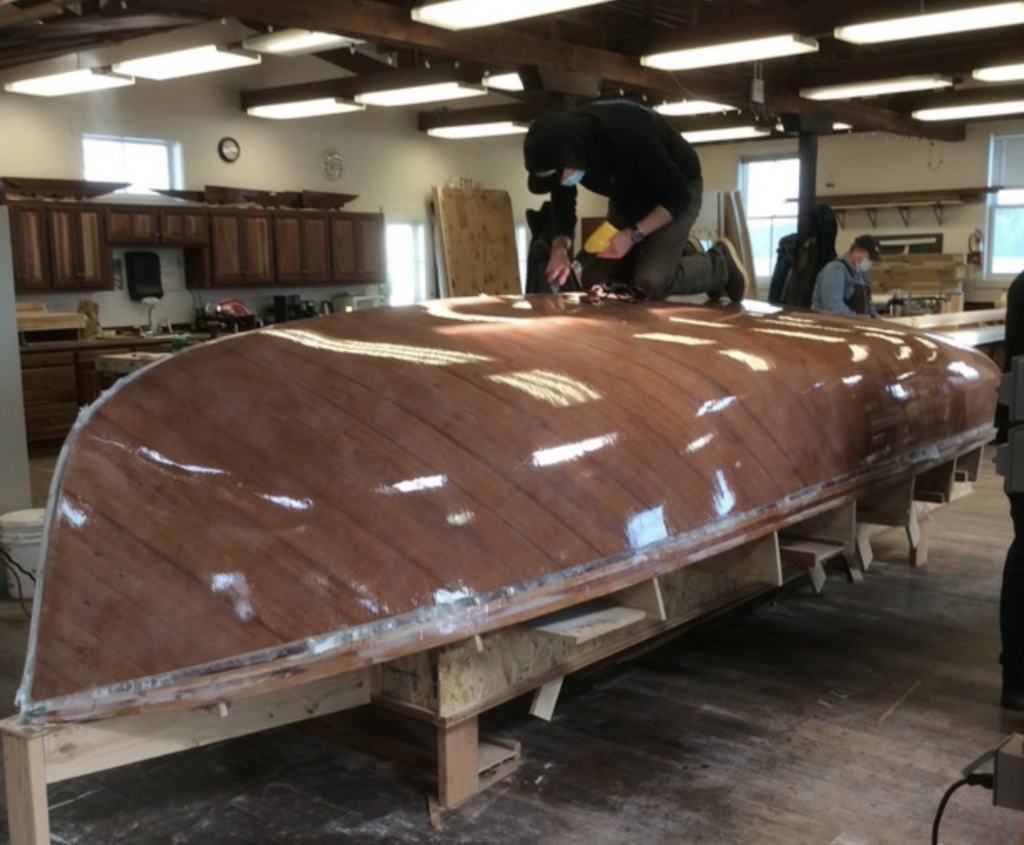
“The school’s Marine Systems instructors work together with employers and Victron experts to define topics for training. The goal is to stay focused on what is most important and common in marine installations, and keep it hands on as much as possible. Victron will provide free technical seminars for the industry in the school’s classroom at the Port of Port Townsend’s boatyard.”
You can find more information about Victron Energy devices designed with professional and leisure marine applications in mind in our Marine Brochure.
You can learn more about the Marine Systems program and enrolment on the school’s website.
And you can watch the experience of one NWSWB graduate – Demian Detweiler – here:
